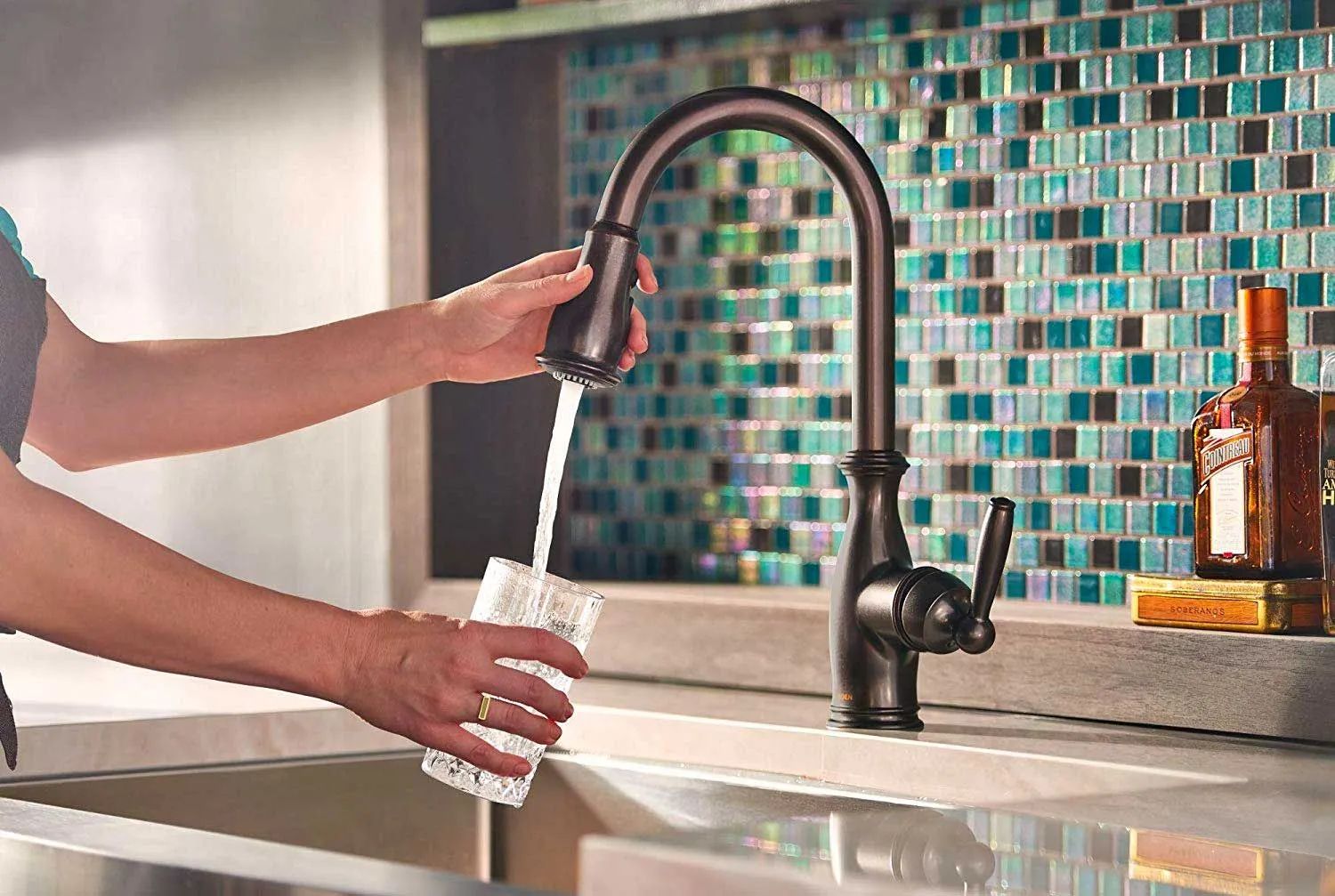
The increasing trends around health and safety, accelerated by the COVID-19 pandemic, have set high standards for the way we choose our plumbing fixtures. For instance, research showed that many renovating homeowners are upgrading their kitchen and bathroom faucets by choosing touchless ones.
So, let’s see why people prefer touchless faucets over touch or regular faucets.
The Problem with Regular Handle Faucets
 Faucets have an interesting history that can be traced back to ancient times. It all started around 1700 B.C. when plumbing systems and faucets were used to control water to private residences and fountains. Eventually, with time, we’ve seen a wide range of faucets. There were faucets that had a knob to turn on; there were faucets that came with a lever; and there were also faucets that you had to push a button to turn them on.
Faucets have an interesting history that can be traced back to ancient times. It all started around 1700 B.C. when plumbing systems and faucets were used to control water to private residences and fountains. Eventually, with time, we’ve seen a wide range of faucets. There were faucets that had a knob to turn on; there were faucets that came with a lever; and there were also faucets that you had to push a button to turn them on.
With the two-handle faucets, the hot and cold water controls are separate. If you want hot water, you pull the hot-water lever and if you want cold water, you turn on the cold-water faucet. When Al Moen burned his hands with the hot water, he designed a single-handed faucet where one could easily adjust the temperature of a stream of water until one obtained the desired temperature. Later in 1945, Lnadis Perry created the first faucet that came with a ball valve.
As time went on, many improvements were made to faucets. However, today there is a large percentage of the global population still uses regular handle faucets. In some developing countries like Mauritius, the double handle faucet can still be found in many houses and apartments. In India, for example, people prefer single lever faucets.
While standard faucets boast unique features and can offer good water flow control, they also come with several drawbacks. The installation of single handle faucets might be simple but when there’s a leak, you have to turn off both valves. This means that there won’t be water until a plumber comes and fixes the problem.
On the other hand, double handle faucets might look timeless, but they are very difficult to install. In addition, double handle faucets come with more parts than single handle faucets. If one of the parts is damaged, it might be difficult to pinpoint the exact problem and fix it.
Faucets work differently based on how they are designed. However, after some time, people started choosing faucets based on looks and functionality. This is how touch-sensitive faucets have become popular.
The Problem with Touch Faucets
 As its name implies, a touch faucet is one that you can turn on and off by simply touching it, usually on the faucet spout. It means a single touch is enough to start and stop the stream of water. These faucets are based on a technology that senses the small charge of the human body. Small sensors are embedded in the handle and a quick touch is enough to turn on or off the faucet. Some touch faucets have additional features like turning off automatically after a short period of time.
As its name implies, a touch faucet is one that you can turn on and off by simply touching it, usually on the faucet spout. It means a single touch is enough to start and stop the stream of water. These faucets are based on a technology that senses the small charge of the human body. Small sensors are embedded in the handle and a quick touch is enough to turn on or off the faucet. Some touch faucets have additional features like turning off automatically after a short period of time.
While these faucets are a huge convenience and can slow the spread of germs, they tend to cost a lot more than standard faucets. Another common problem includes the fact that you’ll have to change the batteries periodically. In addition, some models have reported as faulty or defective.
Why Should You Opt For Touchless Faucets?
 Among the many choices for kitchen faucets, touchless faucets can now be seen in many high-end restaurants and luxury hotels. Over the last decade, these sensor faucets have been a simple yet stylish addition to many kitchens and bathrooms in countries like Finland, Denmark, Sweden and Norway. Across these regions, these advanced plumbing fixtures have been rapidly embraced because of their unmatched durability, convenience, advanced sensing, easy installation and high performance.
Among the many choices for kitchen faucets, touchless faucets can now be seen in many high-end restaurants and luxury hotels. Over the last decade, these sensor faucets have been a simple yet stylish addition to many kitchens and bathrooms in countries like Finland, Denmark, Sweden and Norway. Across these regions, these advanced plumbing fixtures have been rapidly embraced because of their unmatched durability, convenience, advanced sensing, easy installation and high performance.
Touchless faucets rely on proximity sensors that can easily minimize the chances of spreading germs. Moreover, you don’t need to clean these faucets as often as you used to do with regular faucets, as they don’t come into contact with as many germs.



